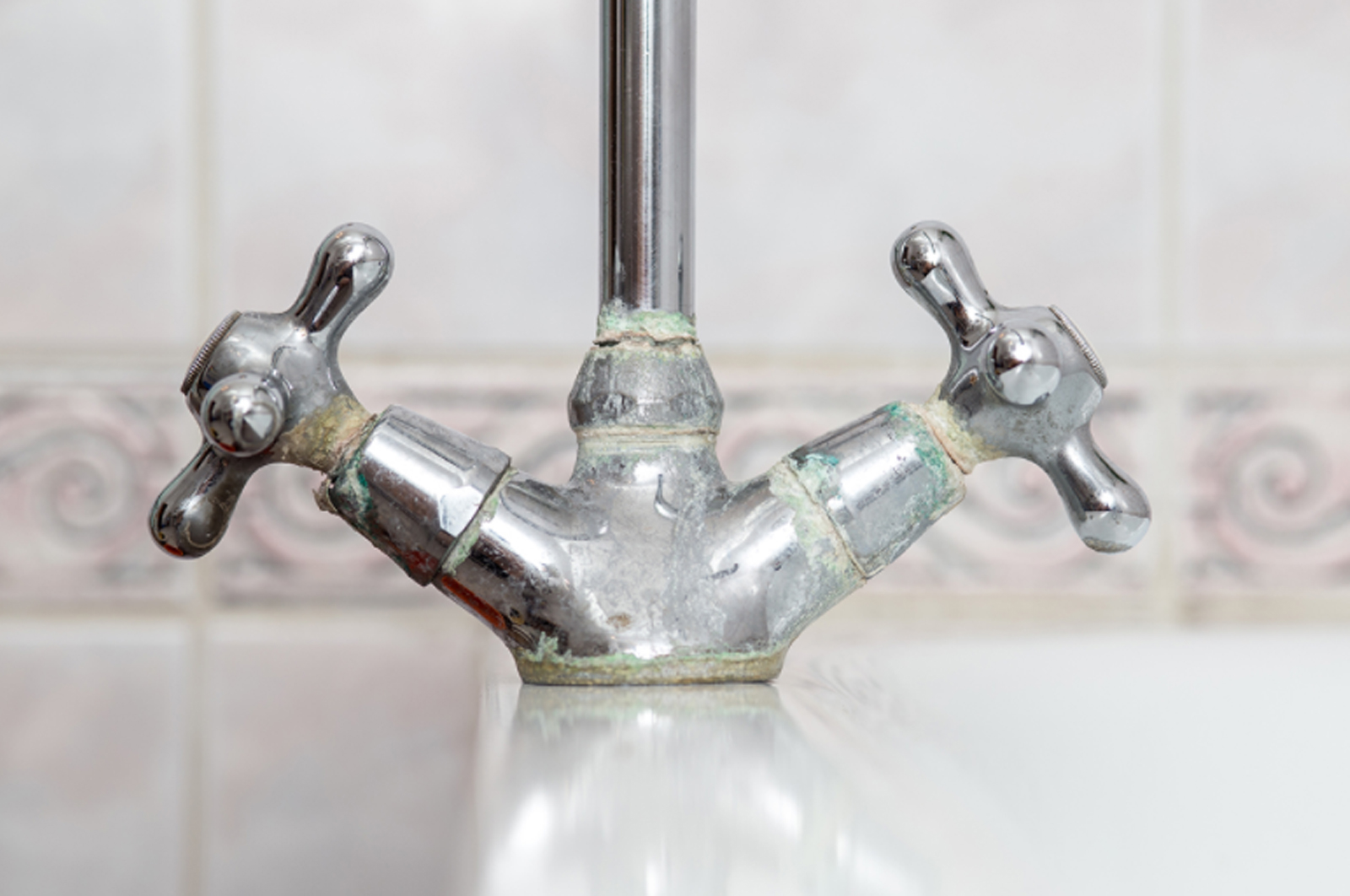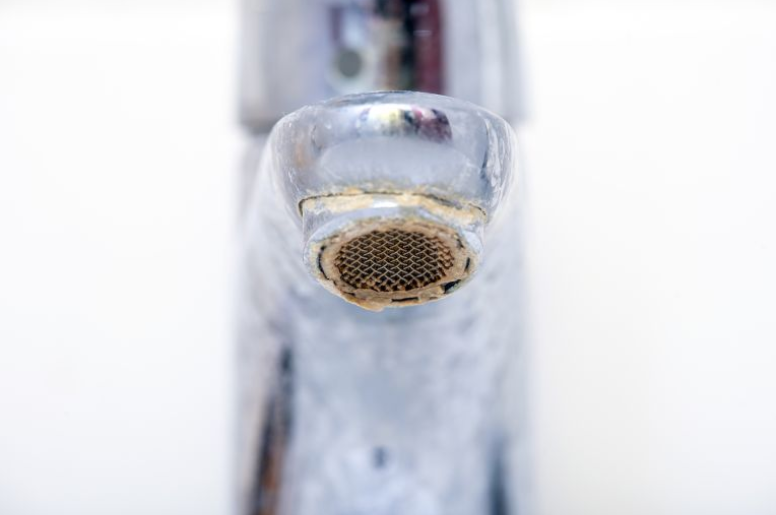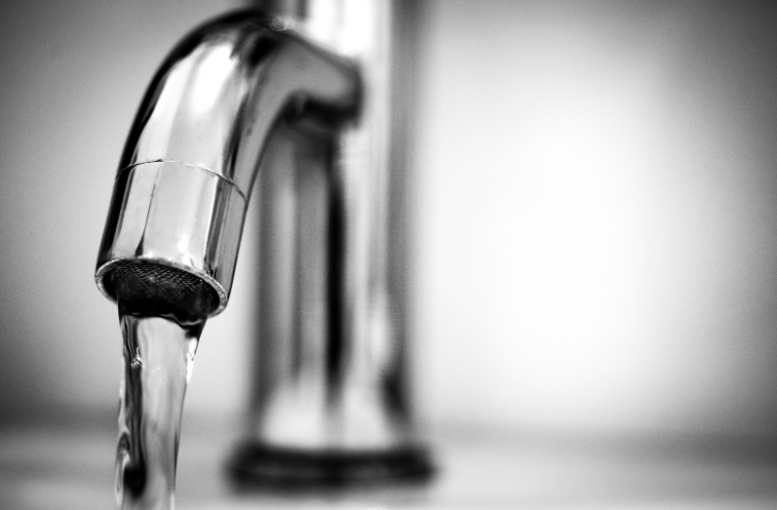Find A Plumber Near You
Call Us Now:

You may have noticed white scales forming on your faucets, toilet bowl, and showerheads, or observed a powdery white substance on the surface of your kettle and drinking glasses. Perhaps the water flow coming out of your taps is asymmetrical. While not uncommon, these are all signs that you’re dealing with limescale buildup.
Limescale, also known as calcium scale, is a problem faced in homes situated in places with hard water – accounting for around 85% of Canada and the United States. Hard water leaves behind deposits of calcium carbonate (or CaCO3 ), which is the primary constituent of limescale.
If your property is older, you may notice that limescale clogs up more faucets, showerheads, toilet bowls, and water fixtures compared to a newer home in the same area. This is because limescale takes time to build up and become more noticeable. Similar to what you observe on the outside of these fixtures, your internal plumbing system is also going through the same thing – a gradual limescale obstruction that is slowly narrowing the pipe’s diameter. This calcium deposit inside the toilet pipe can cause a whistling sound at the time of or throughout the flushing. This is an alarm to repair your toilet.Other than the lime sale deposits, you may notice some other plumbing problems in old houses.
So, can limescale buildup be stopped? Definitely! In this guide, we will take a look at ways to remove limescale from the affected water fixtures as well as the next best steps if you suspect limescale in your pipes. And most importantly, we’ll show you how you can avoid or prevent limescale build-up and limescale-related plumbing problems once and for all.
Let’s get started!

As we mentioned earlier, limescale and hard water go hand in hand. Therefore, living in a hard water area is a key indicator or predictor if you have (or will have) a limescale problem in your plumbing system. Most homeowners realize that they live in a hard water area after observing the following signs:
However, if you have a newer property, you may not notice the above signs immediately. In order to determine if you have hard water, you can try this simple test:
The advantage of faucets, showerheads, and other similar water fixtures is that they can be removed quite easily and submerged in a solution that will remove limescale and its deposits. Generally, these solutions are acids of varying strengths and therefore, the safest type of container to use with acidic solutions are those made of glass.
After you have unscrewed your faucet aerator (the tip of the faucet) and/or shower head, place them in a glass bowl filled with the acidic solution of your choice. Do not submerge the affected fixture. You only need to fill the glass bowl up to the level that will reach the limescale deposits while leaving the remaining parts untouched.
Here are our recommended solutions and the average soak time it will take for them to break down limescale or calcium scale deposits from the shower head.
NOTE ABOUT MURIATIC ACID: Even if muriatic acid is fast-acting, do not hold the piece that is being partially submerged in the acid. Simply place it gently, so as not to cause the acid to splash, then let go and do not lean in too closely.
CAUTION: When using stronger acids make sure to wear rubber gloves. Additionally, avoid pouring strong acids down your drain as these can cause damage to your pipes. The best option for disposal is to call your local recycling center and ask about how to properly dispose of such hazardous household wastes.

Unlike detachable water fixtures, it is not recommended to use really strong acids (like muriatic acid) on toilets, bathtubs, and sinks to remove limescale. The wider area of these fixtures makes it more complicated to use stronger acids, hence increasing the risk of skin contact, resulting in injuries. Some sinks can also stain permanently upon contact with undiluted muriatic acid.
It is recommended to instead use white vinegar or lemon juice for all three kinds of fixtures when removing limescale.
The things needed to remove limescale from a toilet bowl are white vinegar or lemon juice, a spray bottle, and a toilet brush.
It’s possible for limescale deposits to form inside the pipes that supply water to your home – even if these pipes are regularly used. Unfortunately, unlike faucets, showerheads, toilets, tubs, and sinks, your piping system is a lot more difficult to access. If you’ve already cleaned your faucet aerators and showerheads but are still not getting enough water pressure, then there is a high likelihood that your pipes are obstructed with limescale deposits.
In this situation, it is advisable to call an expert plumber straight away. They will be able to locate the problem area and replace your obstructed pipes as needed.
As long as your home is situated in a hard water area, limescale buildup is inevitable. Because of hard water’s natural calcium carbonate compound, it will keep leaving behind deposits that can clog your water fixtures and obstruct your pipes. This issue can lead to low water pressure and can even be the cause of pipe leaks and bursts. Here are a few tips for avoiding or preventing limescale build-up limescale in your home:
A water softener is a device that removes minerals from the water supply, such as calcium and magnesium. It is an efficient method for preventing the accumulation of limescale in your home. A water softener aids in the removal of limescale by removing minerals from the water.
Granular and resin-based softeners are the ones most people use. The resin-based softeners dissolve more quickly than the granular ones, but because they are more difficult to remove, your unit may become clogged with them after some time has passed. This type of water softener should be replaced every three months, as it is similarly susceptible to deterioration after prolonged usage in a home’s water supply.
Installing a water filter on your faucet or tap is another way to stop limescale from building up. There are inline filters, under-counter filters, and whole-house filters available for purchase to prevent limescale build-up. Inline filters are inexpensive and can be put on your home’s water supply pipes. They function by running water through miniature filter cartridges that capture calcium carbonate and other minerals.
Whole-house filters are often installed atop the home’s water supply pipes and utilize a specific resin to capture limescale in the water supply lines. They are typically more expensive than inline filters, but they can prevent the formation of limescale in your home’s pipes.
Regularly cleaning your plumbing is another method to prevent limescale buildup. Each week, you should clean the exterior of your pipes and the interior of your faucets and taps. To remove and clean the limescale buildup in your pipes, you may use a pipe snake, a pipe wrench, or a small garden hose.
For the best benefits, you should maintain a regular water softener regimen for your home’s plumbing system. This will prevent calcium carbonate from leaving your pipes and make them more difficult to clean. You may also engage 1st Rooter plumbing professionals to perform the cleaning for you.
To prevent limescale deposits in your home’s pipes, you should clean them with a baking soda solution. Baking soda is a naturally occurring substance that can be used to dissolve calcium carbonate from pipes. Pipes can be cleaned with a combination of baking soda and vinegar.
Pour a mixture of one part baking soda and two parts vinegar down your drains. After approximately 20 minutes, rinse the pipes with hot water to remove all remnants of the combination.
You can also clean your pipes with hot water. To prevent limescale accumulation in the pipes in your home, you should run hot water daily. You can also utilize a shower head that allows you to change the temperature of the water. This will prevent calcium carbonate from accumulating in your pipes and making them tough to clean and hard to use.
Using a pipe cleaner or pipe snake and also, pouring vinegar down the drain can reduce limescale buildup and even remove limescale. You can use a descaler system and a magnetic water conditioner to prevent further limescale buildup. If you reduce your water pressure and use stainless steel water pipes it will help too.
The only effective solution to preventing limescale buildup in the future is to have a water softener system installed by a trusted plumbing service like 1st Rooter Plumber.
At 1st Rooter Plumbing, we strive to give reliable solutions to various plumbing problems. If you would like to have your obstructed pipes assessed, we can locate them with pinpoint accuracy and replace them as needed. If you want to explore water softening systems that will help you say goodbye to limescale issues and other hard water problems, we can give you the best options out there and provide a seamless installation service to match. If, unfortunately, you have to replace your toilet because of lime scale deposit-related issues, 1st Rooter will assist you from the rough-in measurements to the last part of the toilet installation.
Leave A Reply